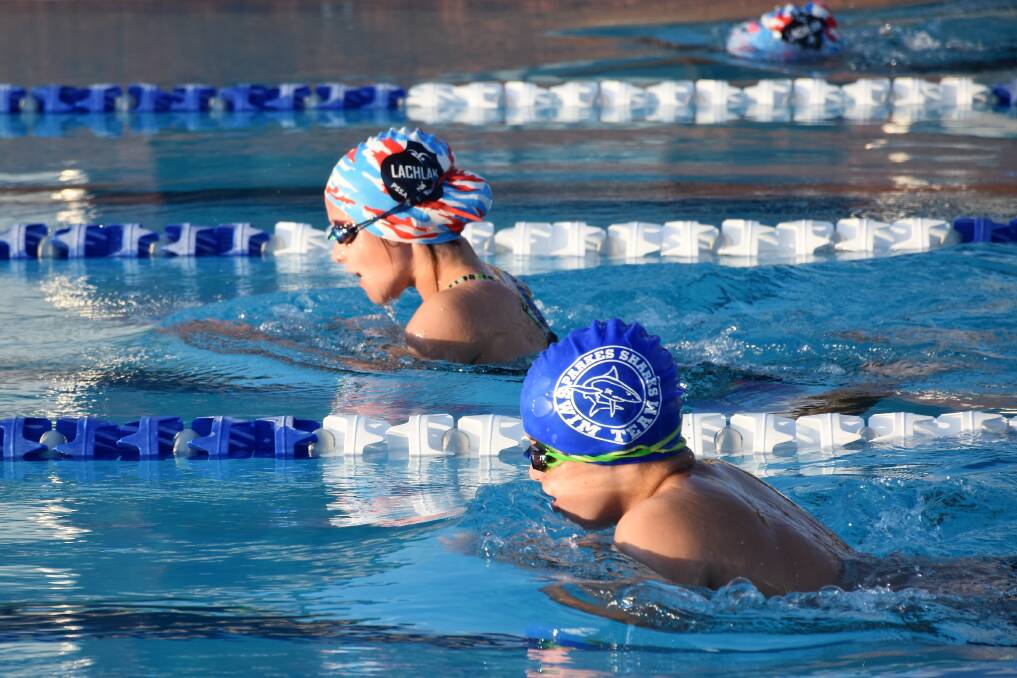
A nation-wide drop in swimming lesson enrolments because of coronavirus lockdowns is causing concern about childrens' water safety.
Subscribe now for unlimited access.
$0/
(min cost $0)
or signup to continue reading
But numbers in Parkes don't appear to be too badly affected, according to Parkes Shire Council and the Parkes Swimming Club.
Royal Life Saving Australia has released data showing a 25 per cent average drop in enrolments across the country for seven to 12-year-olds.
The figures are most stark in metropolitan Sydney where enrolments for 10 to 12-year-olds are down more than 50 per cent and the average enrolment drop is 41 per cent.
Council's support services manager Sharon Ross said learn to swim enrolments in Parkes are about 100 down on last year but the numbers are still large.
"We currently have [about] 280 swimmers," she said.
"The biggest COVID impact for us has been that we cannot run pre-school lessons during the day as we can't have the public on site when the schools are booked in.
"It's been very hard for people with young families and that may be a contributing factor to the decline in numbers."
Meanwhile for the Parkes Sharks Swimming Club, their membership numbers are only 15 less than last season, going from 145 registered swimmers to 130.
"We had membership inquiries coming out of our ears," club president TeAnau Dolbel said.
"We have so many parents wanting their kids to learn to swim."
Unfortunately because of COVID-19 guidelines, the club has had to limit the number of swimmers they have in a squad, restricting any new comers from joining for the time being.
"We had to wait to see how many swimmers were returning this summer to know how many places we had," TeAnau said.
"We might actually end up turning people away.
"The club is looking very strong - numbers have been strong and solid over the last five years.
"We do lose the older swimmers each season but we're picking up those numbers on the bottom end."
In Queensland swimming enrolments are down 13 per cent in metropolitan areas and 17 per cent in its regions.
The data excludes Victoria where strict restrictions have prevented swimming pool attendance for months.
"Royal Life Saving is concerned that COVID-19 may create a generation of non-swimmers, who will never be safe around water," Royal Life Saving chief executive Justin Scarr said.
"Parents should be reminded that learning to swim is not only a partial vaccine against drowning, it boosts a lifelong love of swimming for fun, health and fitness."
Mr Scarr said it's the wrong time to quit swimming lessons.
"If a seven, eight or nine-year-old child can't yet swim 50 metres and tread water for two minutes then they should be in swimming and water safety lessons," he said.
If cost is a barrier, he encouraged parents to investigate government sport vouchers, enrol their child in subsidised holiday programs or ask grandparents to gift swim lessons for birthdays or Christmas.
Royal Life Saving wants Australian parents to assess their childrens' swimming ability against the national benchmark for their age.
The benchmark states every Australian child by age six should be able to swim continuously for at least five metres, submerge, move through an obstacle and identify people and actions to help in an emergency.
By age 12, they should be able to swim continuously for at least 50 metres and tread water for two minutes. They should be able to rescue a person and perform a survival sequence wearing clothes.
What do you think?
Send a letter to the editor by filling out the online form below.

